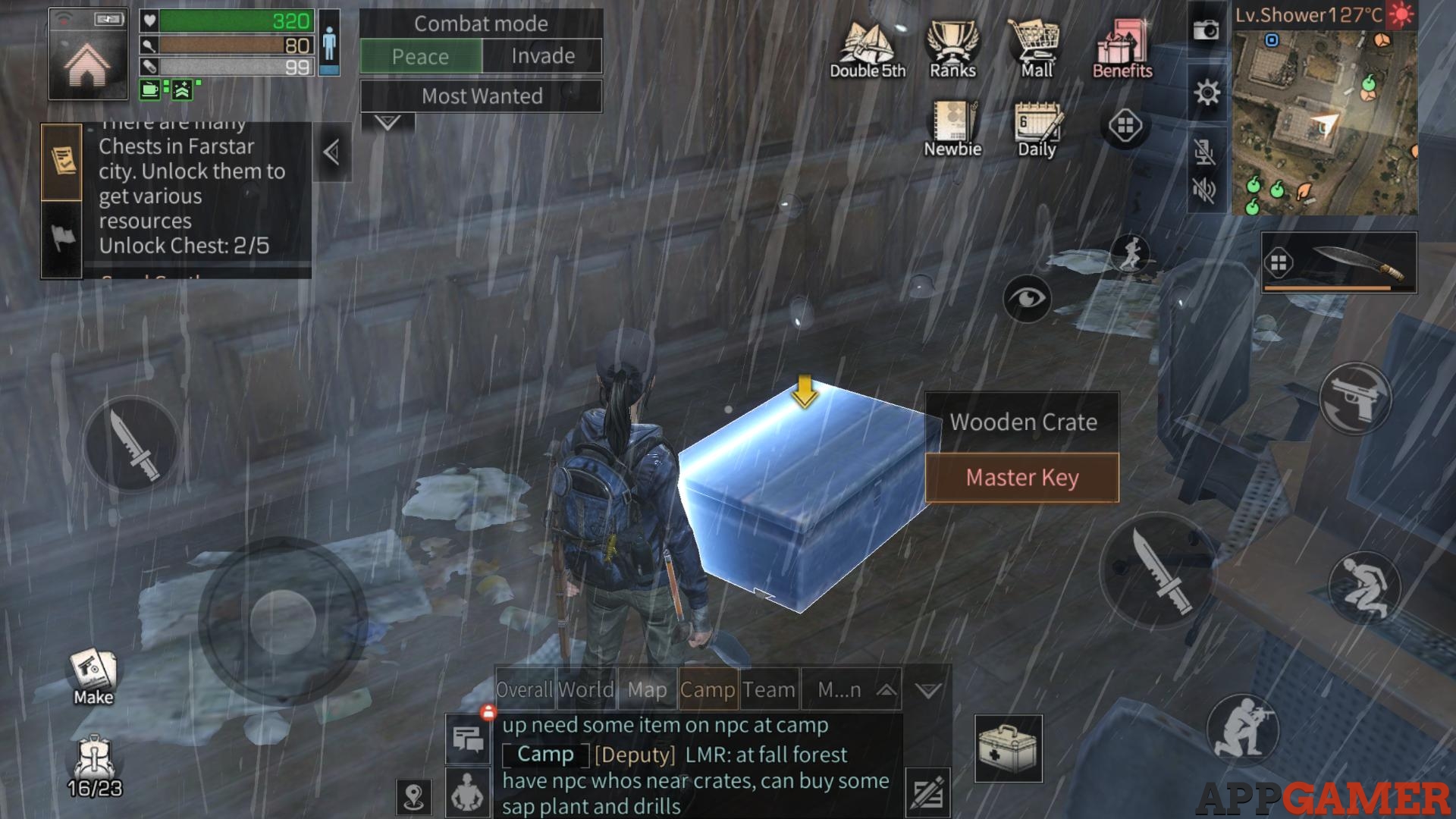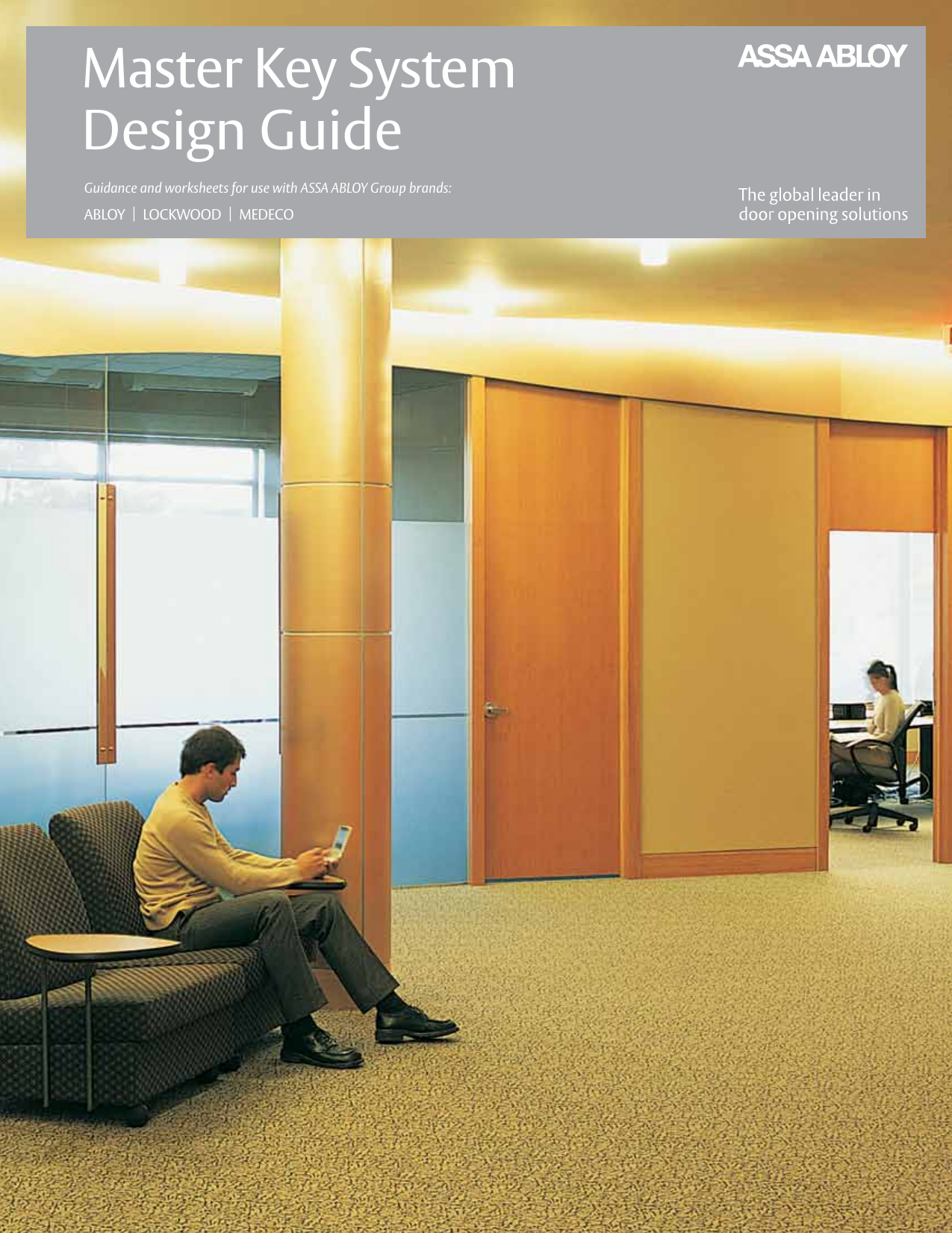Master Keying Software used to design create and maintain master keying systems, used by, locksmiths, Offices, Schools, Apartments, Hotels, Motels, Universities, Government, Hospitals, and more. Free pinning calculators for mobile or desktop Since 1990. Master keying regulates access to specific zones while having one master key that accesses all zones. Masterkey system allows control of access to different rooms/areas of an office, business, or building. Locking systems can be set up several different ways: KEYED ALIKE - two or more locks can be operated with the same key. Shallow master keying requires the use of a master key with key cuts that are all more shallow than those of the tenant key. Note: The key cut combinations used here are examples only. 6 5 4 3 2 1 0 7 A M Shallow master key T Tenant key Circle the smallest number of each cut. The circled numbers are the required bottom pins. In shallow master. How to have one master key for all your doors in your complex this will be done with minimal tools using several items found in your own home example a walgr.
A master key operates a set of several locks. Usually, there is nothing special about the key itself, but rather the locks into which it will fit. These master-keyed locks are configured to operate with two, or more, different keys: one specific to each lock (the change key), which cannot operate any of the others in the set, and the master key, which operates all the locks in the set. Locks that have master keys have a second set of the mechanism used to operate them that is identical to all of the others in the set of locks. For example, master keyed pin tumbler locks often have two shear points at each pin position, one for the change key and one for the master key. A far more secure (and more expensive) system has two cylinders in each lock, one for the change key and one for the master key.
Master keyed lock systems generally reduce overall security.[1] The fact that some pin chambers have two shear points allows for more options when picking and it also allows for more keys to operate. For example, a standard 6 pin cylinder, which was designed to be operated by only one key, can be operated by up to 26 = 64 keys if there are two shear points in each chamber.
Larger organizations, with more complex systems, may have several levels of master keys, where the top level key works in all of the locks in the system. To visualize this, it can be thought of as a hierarchical chart, or a tree.
A practical attack exists to create a working master key for an entire system given only access to a single master-keyed lock, its associated change key, a supply of appropriate key blanks, and the ability to cut new keys.[1]
Locksmiths may also determine cuts for a replacement master key, when given several different key examples from a given system.
Maison key system[edit]
Master Keying Guide Questions
A Maison key system is a keying system that permits a lock to be opened with a number of unique, individual keys.[2] Maison key systems are often found in apartment building common areas, such as main entrance or a laundry room where individual residents can use their own apartment key to access these areas. Unlike a master key system, where each individual lock has one individual operating key and one common master key, Maison lock is designed to be operated by every key within the system.
Because of the inherent lack of security in the Maison key system, some jurisdictions prohibit the use of Maison key systems in apartment and condominium complexes. In such locations, access is usually facilitated by either a high-security, key-controlled system or the use of electronic access control systems such as a card reader.

See also[edit]
References[edit]
- ^ abBlaze, Matt (March 2003). 'Rights amplification in master-keyed mechanical locks'(PDF). IEEE Security & Privacy. 99 (2): 24–32.
- ^'The Maison Key System and Its Uses'. www.altonalocksmiths.com.au. Retrieved 2017-01-28.
One cool thing about pin-and-tumbler locks is that you can re-configure them to fit an existing key (provided that the key is for the same lock design). The advantages of this are obvious: You can add new locks to your home or business without attaching a bunch of new keys to your key ring.
To make a new key for an existing lock, you cut a series of notches in the key so that it raises each of the upper pins just above the shear line. Essentially, you cut a pattern in the metal that matches the pattern of the pins in the lock. To change a lock so that it fits an existing key, you simply work in the opposite direction: You change the pattern of the pins in the lock so that it matches the pattern of notches in the key. If the lock is designed with a universal keying system, any locksmith can re-key the lock in no time. You can also get locks re-keyed at most hardware stores.
Advertisement
Advertisement

In this basic six-pin lock set, you can see how this re-keying works. When you open up the shafts in the cylinder and empty them out, you have six springs and 12 tiny pins. All of the upper pins are exactly the same size. The remaining six pins (the lower pins) will be of various lengths to match up with the notches on the key.
The process of re-keying a lock is very simple. The locksmith removes all of the pins from the cylinder. Then, drawing from a collection of replacement pins of various sizes, the locksmith selects new lower pins that fit perfectly between the notches of the key and the shear line. This way, when you insert the new key, the lower pins will push all the upper pins just above the shear line, allowing the cylinder to turn freely. (This process may vary depending on the particular design of the lock.)
It doesn't matter how long the upper pins are (since they all rest above the shear line when the key is inserted), so the locksmith simply re-inserts the six original upper pins that came with the lock. And that's all there is to re-keying. The entire process takes only a few minutes.
Master Keying Guide Training
Master keys are an interesting technology somewhat related to lock picking (because they're means of getting past locks without the main key).
Some locks are designed to work with two different keys. The change key will open only that specific lock, while the master key will open that lock and several others in a group. In these locks, a few of the pin pairs are separated by a third pin called a master wafer or spacer.
When three pins are combined in a shaft, there are two ways to position the pins so they open the lock. The change key might raise the pins so that the shear line is just above the top of the master wafer, while the master key would raise the pins so the shear line is at the bottom of the master wafer. In both cases, there is a gap at the shear line and the key is able to turn.
Master Keying Chart

In this lock design, the lowest pin would be the same length in each lock in the group, but the master wafer would vary in length. This lets one person, say a building manager, access many different locks, while each individual key-holder can open only his or her own lock.
In the next section, we'll look more closely at the differences between lock picking by locksmiths and illegal lock picking.